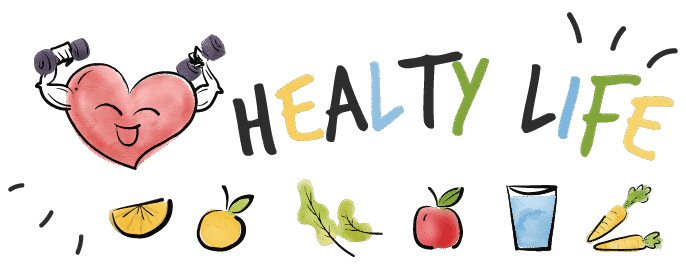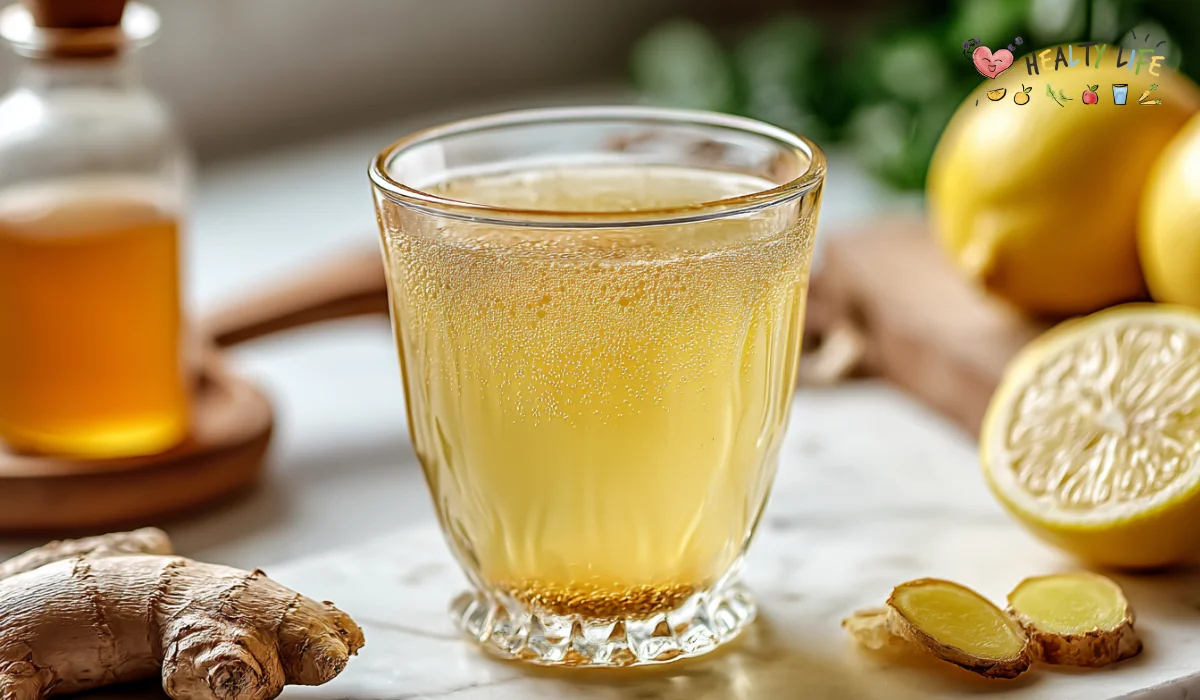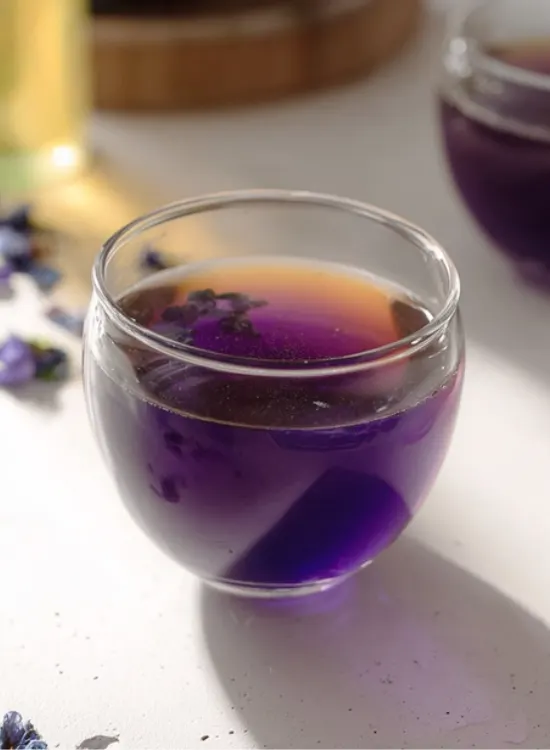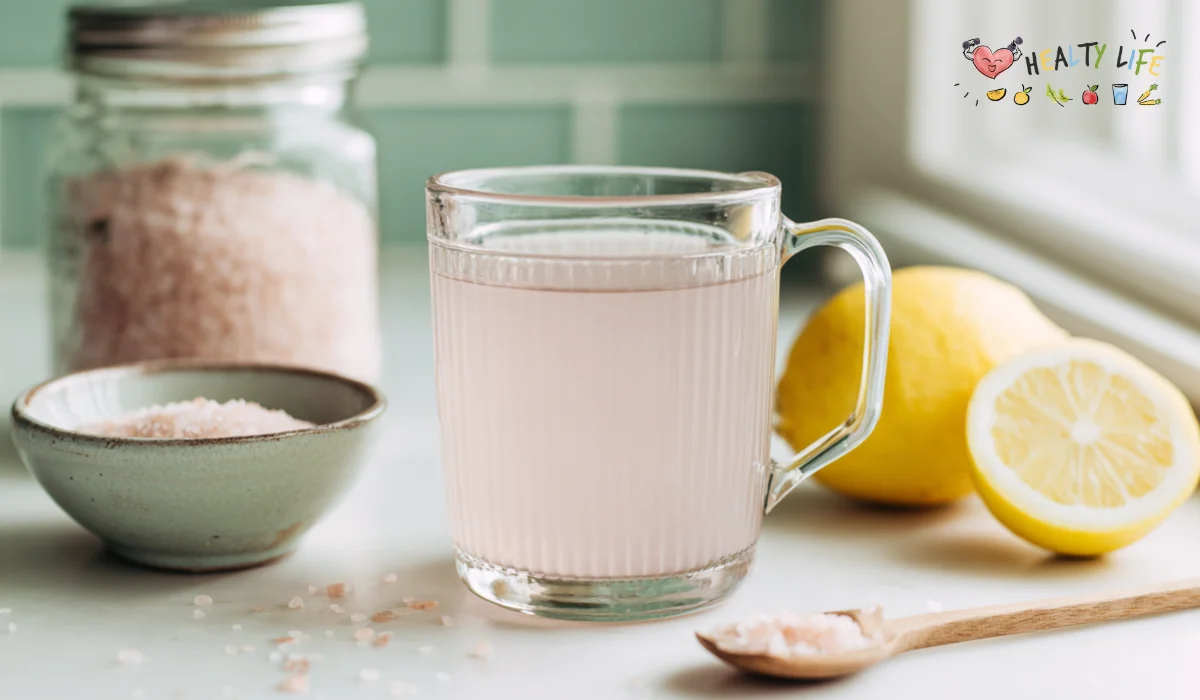The Viral “Oprah Pink Salt Recipe” for Weight Loss
Have you stumbled across videos claiming that Oprah Winfrey has discovered a miraculous weight loss “trick” involving pink Himalayan salt? Perhaps you’ve seen testimonials promising that this simple homemade drink can “melt belly fat” and help you lose 20, 50, or even 100 pounds without diet or exercise?
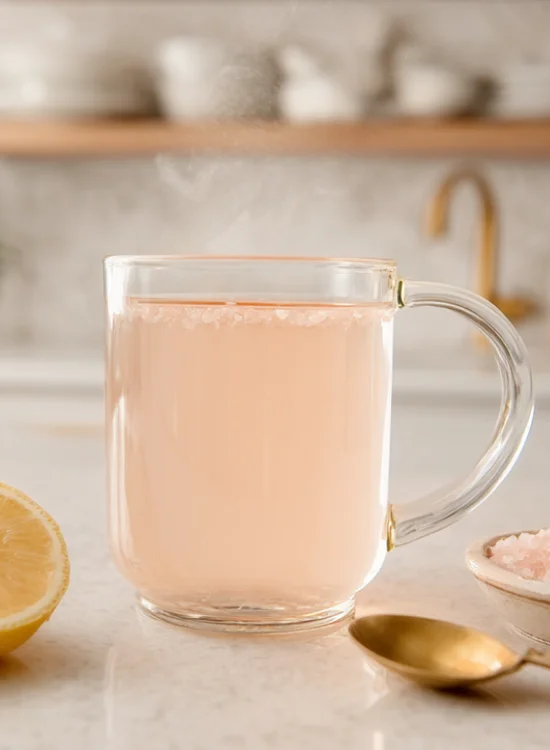
Table of contents
- The Viral “Oprah Pink Salt Recipe” for Weight Loss
- The Unveiling: Why the “Oprah Pink Salt Trick” is a Scam
- Understanding the “Pink Salt Trick” Recipe Itself
- Himalayan Pink Salt: Real Benefits vs. Misconceptions for Weight Loss
- Health Risks and Precautions of Consuming Salt Water
- What Medical Professionals and Dietitians Say About Weight Loss
- Beyond the Hype: Genuine Approaches to Metabolic Health
- What to Do If You’ve Fallen Victim to This Scam
- Protecting Yourself from Future Scams
- The Science of Sustainable Weight Loss
- Related Scam Awareness
- Conclusion: Stay Skeptical, Stay Informed
Here’s the immediate truth: The “Oprah Pink Salt Recipe” for weight loss is primarily associated with an elaborate scam.
These viral videos and advertisements use sophisticated AI-generated deepfake technology to falsely portray Oprah endorsing products and methods she has never actually recommended. The real Oprah Winfrey has publicly condemned these fraudulent endorsements, yet the scam continues to spread across social media platforms, preying on people desperate for effective weight loss solutions.
In this comprehensive guide, you’ll learn exactly how this deceptive marketing campaign works, why the claims are scientifically unfounded, the real facts about Himalayan pink salt, potential health risks of following these “recipes,” and most importantly, how to protect yourself from falling victim to similar scams.
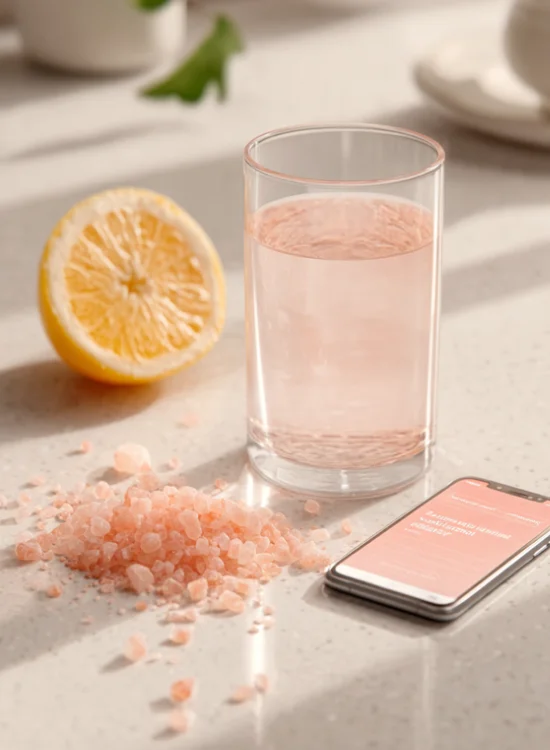
The Unveiling: Why the “Oprah Pink Salt Trick” is a Scam
The Deepfake Deception: Oprah Never Endorsed It
The foundation of this entire scam rests on AI-generated deepfake videos that convincingly appear to show Oprah Winfrey (and sometimes co-host Hoda Kotb) discussing a revolutionary weight loss breakthrough involving pink salt. These videos use advanced artificial intelligence to manipulate existing footage, making it appear as though these celebrities are speaking words they never actually said.
Oprah herself has publicly addressed these fraudulent endorsements, warning her audience about the deceptive use of her likeness to promote products she has never endorsed. Despite her clear condemnation, these fake videos continue to circulate, often accompanied by fabricated quotes and testimonials.
Common Tactics of the Scam
Understanding how these scams operate can help you identify and avoid them in the future:
Shifting “Recipes” and Exotic Ingredients The actual formula for the “pink salt recipe” changes constantly across different promotional materials. Sometimes it’s just salt and water, other times it includes lemon juice, apple cider vinegar, ginger, or honey. This inconsistency is intentional—it creates confusion and makes the “solution” seem exclusive and special.
Emotionally Manipulative Storytelling These scam videos typically follow a predictable pattern: they begin by acknowledging the viewer’s struggles with weight loss, creating a sense of shared frustration and desperation. Then they present the “pink salt trick” as a breakthrough discovery that will finally solve all their problems effortlessly.
Bait-and-Switch Marketing The initial hook involves simple, accessible ingredients you likely have in your kitchen. However, once you’re engaged, the marketing pivots to promote an “exclusive” supplement, powder, or program that costs hundreds of dollars and promises enhanced results.
Over-the-Top, Unscientific Claims Legitimate weight loss methods produce gradual, sustainable results. These scams promise dramatic transformations—losing 20-100 pounds in weeks or months—without requiring any changes to diet or exercise habits. Such claims are physiologically impossible and scientifically unfounded.
Fake Science and Pseudomedical Jargon Scammers often reference non-existent “clinical trials,” claim “doctor approval,” or use complex-sounding terminology to create an illusion of scientific credibility. When pressed for actual studies or peer-reviewed research, these sources never materialize.
Scarcity and Urgency Tactics Classic high-pressure sales techniques include artificial deadlines (“This offer expires in 10 minutes!”), limited quantities (“Only 50 bottles left!”), and exclusive access claims (“This secret method won’t be available much longer!”). These tactics are designed to prevent you from taking time to research or think critically about the claims.
Non-existent Customer Service and Refunds Once payment is processed, many victims discover that customer service is unreachable, refund policies are ignored, and the promised products either never arrive or are completely different from what was advertised.
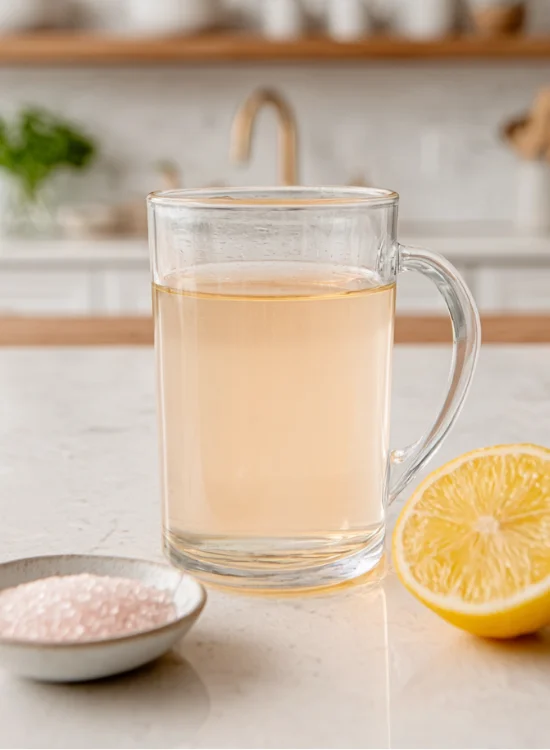
Who is Most Vulnerable to These Trends?
These scams particularly target women over 30 who may be experiencing hormonal changes related to perimenopause and menopause. During this life stage, many women struggle with unexplained weight gain, increased stress, sleep disruptions, and metabolic changes that make traditional diet and exercise approaches less effective.
Social media algorithms compound this vulnerability by tracking user behavior and interests, then deliberately pushing diet-related content to individuals who have shown interest in weight loss topics. This creates an echo chamber where desperate individuals are repeatedly exposed to increasingly extreme “solutions.”
Understanding the “Pink Salt Trick” Recipe Itself
Despite the scam surrounding it, let’s examine what the actual “recipe” typically involves. If you’re interested in legitimate, evidence-based health drinks, you might want to explore our Apple Cider Vinegar Tonic or Lemon Ginger Water recipes instead.
The Actual Ingredients Commonly Mentioned
Most versions of the pink salt recipe include:
- Pink Himalayan salt (usually 1/4 to 1/2 teaspoon)
- Warm or room temperature water (8-16 ounces)
- Optional additions: lemon juice, apple cider vinegar (ACV), raw honey, ginger, mint, or coconut water
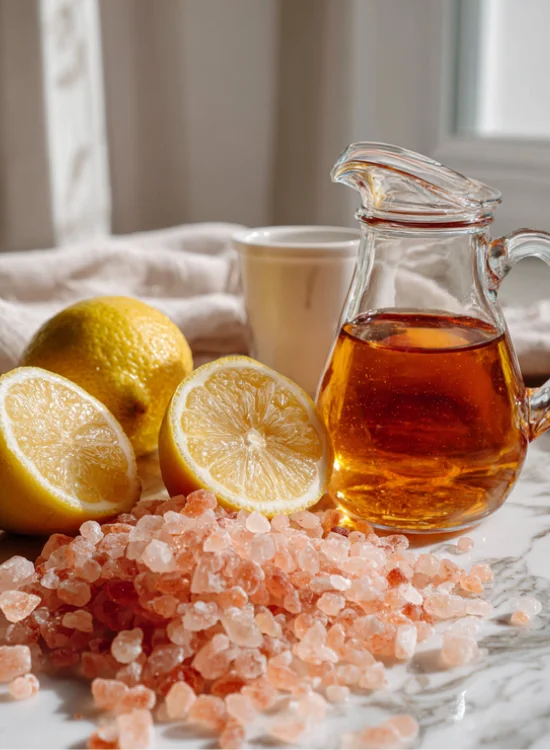
How to Prepare “Sole Water” (Concentrated Salt Solution)
Some variations reference creating “sole water”—a saturated salt solution made by dissolving pink Himalayan salt in water until no more salt can be absorbed. This concentrated mixture is then diluted (typically 1 teaspoon of sole water in a glass of regular water) before consumption.
Daily Consumption Method
The typical protocol involves drinking this salt water mixture first thing in the morning on an empty stomach, often 15-30 minutes before eating. Some versions recommend consuming it multiple times throughout the day.
Variations and Flavor Additions
To make the salty taste more palatable, many recipes suggest adding lemon juice for vitamin C, apple cider vinegar for supposed metabolic benefits, ginger for digestive support, or honey for sweetness. These additions don’t fundamentally change the primary ingredient—salt water.
Important Note: Some scam variations specifically mention combining pink salt with apple cider vinegar. If you’re interested in legitimate apple cider vinegar recipes, check out our Pink Salt Apple Cider Vinegar Weight Loss Recipe analysis, which examines these claims scientifically.
Himalayan Pink Salt: Real Benefits vs. Misconceptions for Weight Loss
To understand why the “pink salt trick” claims are misleading, we need to examine what Himalayan pink salt actually is and what science says about its effects.
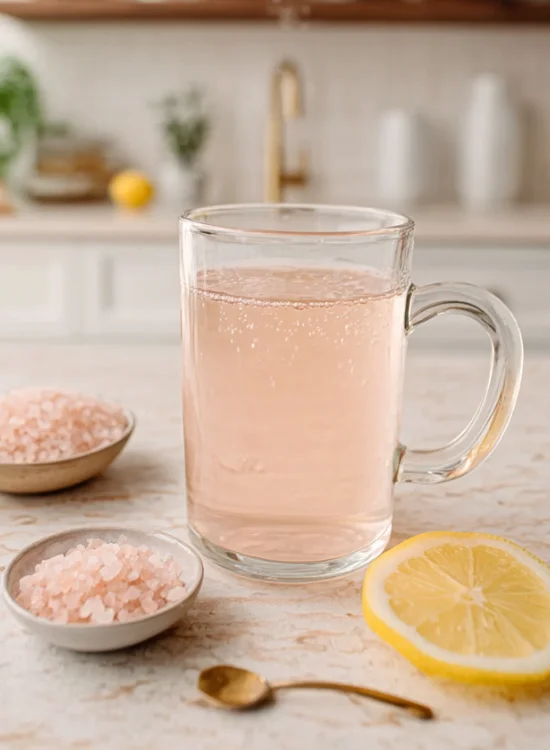
What is Pink Himalayan Salt?
Pink Himalayan salt is rock salt mined from the Punjab region of Pakistan, near the foothills of the Himalayas. Its characteristic pink color comes from trace amounts of iron oxide (rust). Unlike heavily processed table salt, Himalayan salt undergoes minimal processing, retaining its natural crystal structure.
Mineral Composition
Himalayan pink salt is approximately 95-98% sodium chloride (the same as regular table salt). The remaining 2-5% consists of trace amounts of about 84 other minerals, including potassium, calcium, magnesium, iron, and zinc.
While marketing materials often emphasize these additional minerals, the quantities are extremely small. For example, you would need to consume unrealistic amounts of pink salt to obtain meaningful quantities of these nutrients—amounts that would be dangerous due to excessive sodium intake.
The Body’s Use of Sodium
Sodium is indeed essential for human health. It helps regulate fluid balance, enables proper nerve signal transmission, and supports muscle contraction. However, most people in developed countries already consume more than adequate amounts of sodium through their regular diet.
Limited Evidence for Health Benefits from Trace Minerals
Despite marketing claims about the superior nutritional value of pink salt, peer-reviewed scientific studies have found no significant health advantages compared to regular table salt. The trace mineral content is too low to provide noticeable health improvements.
Does Pink Salt Directly Burn Fat or Lead to Weight Loss?
The short answer is no. There is no scientific evidence that pink Himalayan salt directly burns fat, boosts metabolism, or causes significant weight loss. Salt is not a fat-burning compound, nor does it possess any special properties that would accelerate weight loss beyond what regular table salt might provide.
Any perceived “weight loss” from drinking salt water is likely due to:
Temporary Water Weight Changes Salt affects fluid retention in the body. Initially, consuming salt water might cause temporary bloating and water retention. However, as your body adjusts, you might experience the opposite effect, leading to temporary water weight loss that has nothing to do with fat loss.
Placebo Effect and Increased Awareness Starting any new health ritual often increases awareness of eating and drinking habits. This heightened attention might lead to better food choices and increased water intake, which could support weight management—but these benefits come from behavioral changes, not the salt itself.
Morning Routine and Hydration Drinking water first thing in the morning (with or without salt) can support hydration and might help some people feel more energized. Better hydration can support overall health and might indirectly contribute to weight management, but again, this has nothing to do with the salt’s properties.
Related Content: For healthier morning beverages that actually support wellness, consider our Turmeric Golden Milk or Green Goddess Smoothie recipes.
Health Risks and Precautions of Consuming Salt Water
While pink Himalayan salt isn’t inherently dangerous in normal quantities, regularly consuming salt water as promoted by these weight loss schemes can pose serious health risks.
The Dangers of Excessive Sodium Intake
The American Heart Association recommends limiting sodium intake to less than 2,300 mg per day, with an ideal limit of 1,500 mg for most adults. Just one teaspoon of salt contains approximately 2,300 mg of sodium.
Excessive sodium consumption is linked to:
Cardiovascular Problems
- High blood pressure (hypertension)
- Increased risk of heart disease and stroke
- Strain on the cardiovascular system
Kidney and Liver Issues
- Increased burden on kidney function
- Potential kidney damage over time
- Liver stress from processing excess sodium
Fluid Retention and Bloating
- Water retention that can mask fat loss progress
- Uncomfortable bloating and swelling
- Temporary weight gain that discourages continued healthy habits
Metabolic Disruption
- Interference with natural fluid balance
- Potential disruption of electrolyte balance
The Crucial Lack of Iodine
One of the most significant health concerns with relying heavily on Himalayan pink salt is its lack of iodine. Unlike table salt, which is typically fortified with iodine, pink salt contains negligible amounts of this essential nutrient.
Iodine is crucial for:
- Proper thyroid function
- Hormone production and regulation
- Metabolism regulation
- Brain development and function
Iodine Deficiency Symptoms
- Fatigue and weakness
- Unexplained weight gain
- Cold sensitivity
- Dry skin and hair
- Memory and concentration problems
- Irregular menstrual periods
Populations at Higher Risk
- Pregnant and breastfeeding women
- Vegans and vegetarians
- People who avoid dairy products and eggs
- Individuals living in areas with iodine-deficient soil
If you’re considering replacing regular salt entirely with pink Himalayan salt, consult with a healthcare provider about monitoring your iodine levels and potentially taking supplements.
Who Should Avoid or Limit Salt Intake
Certain individuals should be particularly cautious about increasing salt consumption:
- People with hypertension (high blood pressure)
- Individuals with kidney disease or dysfunction
- Those with liver problems
- People with heart failure or cardiovascular disease
- Anyone on medications that affect fluid balance
- Individuals following sodium-restricted diets prescribed by healthcare providers
What Medical Professionals and Dietitians Say About Weight Loss
Healthcare professionals and registered dietitians consistently emphasize that sustainable weight management requires a comprehensive approach that includes:
Balanced Nutrition
- A varied diet rich in whole foods, vegetables, fruits, lean proteins, and healthy fats
- Appropriate portion sizes
- Adequate fiber intake
- Proper meal timing and frequency
Regular Physical Activity
- A combination of cardiovascular exercise and strength training
- Activities that can be sustained long-term
- Gradual increases in intensity and duration
Proper Hydration
- Adequate water intake throughout the day
- Recognition that thirst can sometimes be mistaken for hunger
Sufficient Sleep
- 7-9 hours of quality sleep per night
- Recognition of sleep’s role in hormone regulation and appetite control
Stress Management
- Healthy coping mechanisms for stress
- Recognition of emotional eating patterns
- Professional support when needed
Professional Guidance Before making significant dietary changes, especially if you have existing health conditions, it’s crucial to consult with qualified healthcare providers such as:
- Primary care physicians
- Registered dietitians
- Endocrinologists (for metabolic issues)
- Mental health professionals (for eating-related concerns)
The “pink salt trick,” at best, might serve as a supportive morning ritual that encourages hydration and mindful eating. However, it should never be considered a standalone solution for weight management.
Beyond the Hype: Genuine Approaches to Metabolic Health
Rather than searching for quick fixes, focus on evidence-backed strategies for supporting metabolic health. For practical implementation, explore our collection of healthy recipes and wellness drinks that actually support your goals:
Intermittent Fasting (When Appropriate) Some research suggests that structured eating windows might support metabolic health, but this should be approached carefully and with professional guidance.
Strength Training Building and maintaining muscle mass supports metabolic rate and long-term weight management.
Stress Reduction Techniques Chronic stress can interfere with weight management through hormone disruption. Techniques like meditation, yoga, or counseling can be beneficial.
Adequate Protein Intake Protein supports muscle maintenance and can help with satiety and metabolic function. Check out our high-protein recipes like Protein Tiramisu Cups or Peanut Butter Protein Balls.
Fiber-Rich Foods High-fiber foods support digestive health, satiety, and stable blood sugar levels. Try our Three Bean Chili or Lentil Bowl High Protein recipes.
Regular Health Monitoring Regular check-ups can identify underlying health issues that might affect weight management, such as thyroid dysfunction or insulin resistance.
Healthy Hydration Options Instead of salt water, try properly formulated drinks like our Electrolyte Water or Sassy Water Recipe for better hydration support.
What to Do If You’ve Fallen Victim to This Scam
If you’ve already been deceived by the Oprah pink salt recipe scam, take these immediate steps to protect yourself and potentially recover your money:
Stop All Contact
- Do not respond to any further communications from the scammers
- Don’t make additional purchases or provide more personal information
- Block phone numbers and email addresses associated with the scam
Contact Your Financial Institution
- Call your bank or credit card company immediately to report the fraudulent transaction
- Request a chargeback or dispute the charges
- Ask about placing a fraud alert on your account
- Monitor your accounts closely for unauthorized activity
Report to Authorities
Federal Trade Commission (FTC)
- Visit reportfraud.ftc.gov to file a complaint
- The FTC uses these reports to identify patterns and pursue legal action against scammers
Better Business Bureau (BBB)
- File a complaint at bbb.org
- Check if other consumers have reported similar experiences
Local Consumer Protection Office
- Many states have consumer protection agencies that can assist with fraud cases
Social Media Platforms
- Report fraudulent videos and advertisements to the platforms where you encountered them
- This helps prevent others from seeing the deceptive content
Monitor Your Personal Information
- Check your credit reports for unusual activity
- Consider placing a credit freeze if you provided sensitive information
- Monitor bank and credit card statements carefully
- Be alert for identity theft signs
Warn Others
- Share your experience with friends and family to prevent them from falling victim
- Consider posting about your experience on social media (while being careful not to inadvertently promote the scam)
- Leave honest reviews on relevant websites
Beware of Follow-Up Scams
Scammers often target previous victims with “recovery scams” that promise to help you get your money back for an upfront fee. Be extremely cautious of:
- Calls claiming to offer refunds or legal compensation
- Emails from supposed attorneys or government agencies
- Any requests for additional payments or personal information
Protecting Yourself from Future Scams
Red Flags to Watch For:
- Celebrity endorsements (especially using deepfake technology)
- Promises of rapid, effortless weight loss
- “Secret” or “exclusive” formulas
- High-pressure sales tactics with artificial deadlines
- Claims that seem too good to be true
- Lack of verifiable contact information or credentials
- Requests for large upfront payments
Verification Steps:
- Research the company and product independently
- Look for peer-reviewed scientific studies supporting claims
- Check with official celebrity representatives or websites
- Consult healthcare professionals before trying new health regimens
- Read reviews from multiple, independent sources
- Verify contact information and customer service availability
The Science of Sustainable Weight Loss
Understanding the actual science behind weight management can help protect you from future scams and set realistic expectations:
Caloric Balance Weight loss fundamentally requires creating a caloric deficit—consuming fewer calories than you burn. This can be achieved through diet, exercise, or preferably a combination of both.
Realistic Timeline Safe, sustainable weight loss typically occurs at a rate of 1-2 pounds per week. Anything promising significantly faster results should be viewed with skepticism.
Individual Variation People respond differently to various approaches based on genetics, medical history, lifestyle factors, and metabolic health. What works for one person may not work for another.
Plateau Periods Weight loss rarely occurs in a straight line. Plateaus and fluctuations are normal parts of the process, not signs that a method has stopped working.
Lifestyle Integration Sustainable weight management requires changes that can be maintained long-term, not temporary fixes or extreme restrictions. Explore our collection of balanced, nutritious recipes like Greek Chicken Bowls, Salmon Sweet Potato, and Turkey Burrito Bowls for meal ideas that support long-term health goals.
Related Scam Awareness
The “Oprah Pink Salt Recipe” is just one of many similar scams circulating online. Be equally cautious of related fraudulent claims involving:
- Blue Salt Trick variations
- 7 Second Ice Water Hack promises
- Natural Mounjaro recipes
- Japanese Water Weight Loss scams
All of these follow similar deceptive patterns and should be approached with the same level of skepticism.
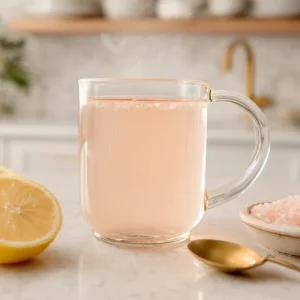
Oprah Pink Salt Recipe
Equipment
- Glass or ceramic cup (8 oz)
- Measuring spoon
- Stirring spoon (non-metal preferred)
Ingredients
- 1/4 teaspoon pink Himalayan salt
- 8 oz 1 cup filtered water, room temperature or warm
- 1 tablespoon fresh lemon juice optional
- 1 teaspoon raw honey optional
Instructions
- Pour room temperature or warm filtered water into a glass.
- Add pink Himalayan salt to the water.
- Stir gently until salt is completely dissolved (about 30 seconds).
- Add lemon juice if desired for flavor and vitamin C.
- Add honey if desired for sweetness.
- Stir once more and consume immediately.
- Best consumed on an empty stomach in the morning.
- Wait 15-30 minutes before eating breakfast.
Notes
- IMPORTANT: This is NOT a weight loss miracle cure despite viral social media claims
- Limit to 1 serving per day maximum due to sodium content
- Consult healthcare provider before regular consumption, especially if you have high blood pressure, kidney issues, or heart conditions
- Pink salt lacks iodine – ensure you get iodine from other sources
- Any weight changes are likely water weight, not fat loss
- This recipe provides about 575mg of sodium (25% of daily recommended limit)
- Pregnant and breastfeeding women should consult doctors before consumption
- Stop use if you experience bloating, headaches, or elevated blood pressure
Conclusion: Stay Skeptical, Stay Informed
The “Oprah Pink Salt Recipe” scam represents a sophisticated form of fraud that exploits people’s legitimate desire for effective weight loss solutions. By using deepfake technology and psychological manipulation, these scammers create convincing presentations that can deceive even careful consumers.
Key Takeaways:
- The Oprah pink salt recipe is a scam that uses AI-generated videos to falsely portray celebrity endorsements
- Pink Himalayan salt has no special weight loss properties beyond those of regular salt
- Excessive salt consumption can be dangerous and may lead to serious health complications
- Sustainable weight management requires a comprehensive approach involving nutrition, exercise, sleep, and stress management
- Professional guidance is essential for safe and effective weight loss, especially for individuals with health conditions
Moving Forward:
Maintain a healthy skepticism toward any weight loss method that promises miraculous results with minimal effort. Instead of searching for shortcuts, invest in proven strategies that support long-term health and well-being. Remember that legitimate health advice comes from qualified professionals, not viral social media content or celebrity endorsements (real or fabricated).
If you’re struggling with weight management, consider working with registered dietitians, certified fitness professionals, or healthcare providers who can create personalized plans based on your individual needs, medical history, and lifestyle factors.
Most importantly, remember that your worth is not determined by a number on the scale. Focus on building healthy habits that make you feel strong, energetic, and confident, rather than chasing quick fixes that promise unrealistic transformations.
Stay informed, stay skeptical, and prioritize your health over trending “tricks” that are too good to be true.
For additional resources on consumer protection and health information, visit the Federal Trade Commission website, consult with healthcare providers, and rely on peer-reviewed research rather than social media trends.
Disclaimer: This article is for informational and educational purposes only and is not a substitute for professional medical advice, diagnosis, or treatment. Always consult with a qualified healthcare provider before making significant dietary changes, especially if you have existing health conditions.
